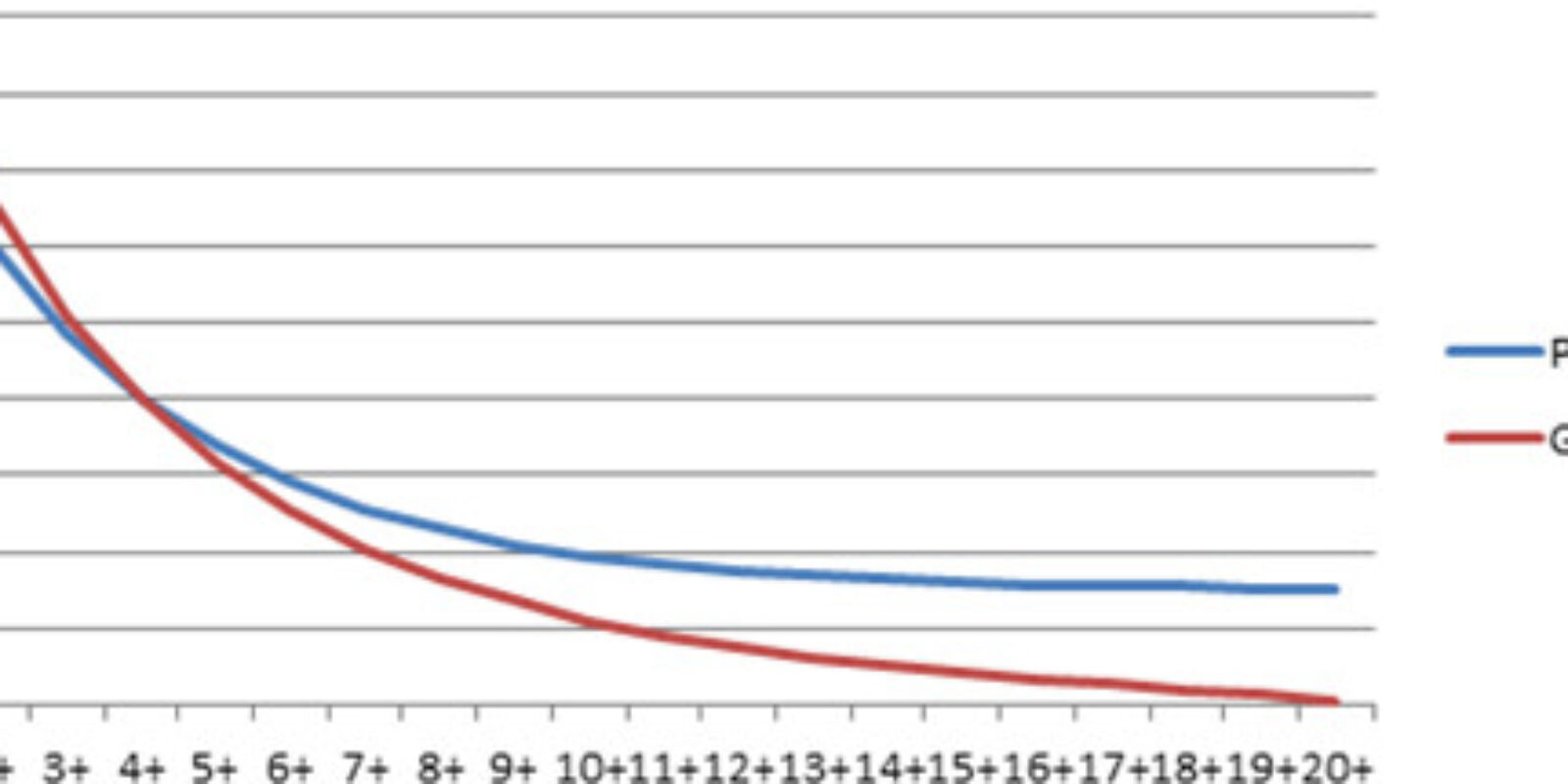Choosing the best marketing attribution model for your business
What is a marketing attribution model?
There isn’t necessarily a ‘best’ type of model as they all allow you to understand consumer behaviour and take steps to optimize your marketing ROI. Marketers will often run several models at once to find the perfect fit as their approach to optimizing budgets and channels matures over time. The main challenge is to strike the perfect balance between models and work out the optimum approach based on your specific business strategy.
What are the advantages of attribution models?
By using the right technology, you can gain accurate insight into the ever-expanding number of channels. This includes understanding how far back you should aim to reconstruct user journeys, which interactions you should take into account/exclude and if your ad networks are providing you with reliable and complementary datasets. This way, you can push the right cross-device brand message to the right user when they are most receptive.
Based on advanced analytics, marketing attribution models allow you to unravel consumer datasets and get an accurate view of the complete customer journey. This will bring a large range of benefits to your marketing efforts, including:
- Cutting costs on ineffective marketing
- Reducing spend while maintaining results
- Maximizing your marketing ROI
- Understanding and optimizing consumer interactions
- Optimizing your path-to-purchase journeys
What are the different types of attribution models?
A. Rule-based attribution
Single-touch attribution models
First interaction/click/touch
First-click attribution is where the first touchpoint that brings a user to a website is credited for the incoming lead. As it measures the consumer’s first point of contact with your site, it prioritizes strategies that attract prospects and make consumers aware of your brand.
Drawback: Although it’s straightforward, it’s also fairly basic. First-touch attribution doesn’t take into account the entire customer journey which gives you a slanted view of what makes your customers convert over time. It also overemphasizes top-of-funnel activities and is ineffective if you already bring in leads but are struggling to convert them.
Last interaction/click/touch
The last-touch attribution model credits the conversion credit entirely to the final touchpoint where a lead has converted. By using ‘last touch,’ you attribute everything to the last touchpoint before the sale.
Drawback: Last touch also gives you a fragmented view of the customer journey which is narrowed down to one single touchpoint. e.g. a landing page or an email. It also doesn't give any credit to channels further up the funnel that contributed to the sale. This makes it impossible to understand how your content is performing as it doesn’t account for the stage customers go through before landing on your product page to make a decision/purchase. Without a 360° view of user touchpoints to measure marketing ROI accurately, you can’t judge where to increase or decrease budgets.
The last non-direct click model is more informative than the standard first-/last-click approach, although it still places 100% of the value on a single interaction. By removing ‘direct’ traffic — i.e. people who already know your site and go there directly by manually entering a URL/bookmark link — you can better assign value to the marketing channel that led to the conversion.
Advantage: It makes a distinction between direct and non-direct traffic, which means you always give credit to the appropriate touchpoint. This way you can see what led customers to purchase from you rather than the last direct touchpoint in their purchasing journey.
Drawback: “Last non-direct click” is overly simplistic as it gives all the credit to a single touchpoint so can’t show how your customers interacted with your brand prior to purchasing. It basically ignores when customers visit your site directly knowing they want to buy.
Multi-touch attribution models
Linear (uniform)
The linear attribution model shares conversion credit equally across each touchpoint or interaction on the customer journey. It gives a participation award to every single marketing channel a business has used to reach the consumer.
Drawback: It fails to spell out the different varying impacts of each marketing channel. This means that limiting your attribution to the linear model will leave you unable to tell which is your most successful and least successful channel.
Position-based (U- or W-shaped)
Position-based attribution modeling divides the credit for a sale between a prospect's first interaction with your brand and the moment they convert to a lead.
Drawback: It can undervalue some of the touchpoints as it places more value on the touches that brought in the initial prospect and converted them as opposed to the middle interactions in the customer journey.
With the time-decay attribution model, the credit is shared amongst all the touchpoints, with weights increasing linearly the closer in time a touchpoint is to the sale. It emphasizes actions that are lower down the funnel, as more credit is assigned to the clicks closest to conversion.
Drawback: As the weightings are only based on length and paths of time, this model doesn’t accurately represent the importance of the all the conversion credit. A user’s first interaction with a brand could be their first click, but if they don’t convert for a few weeks, that click will not get the credit it deserves.
With custom rule-based, an analyst defines which weights to apply to each interaction based on how it is positioned in the consumer journey. It provides the most nuanced look at what's contributing to your sales. As it can be challenging to create and requires a lot of data, it’s best suited to businesses that have a long buying cycle and plenty of available data.
Drawback: It is subject to the analysts’ bias so is less impartial than the other models and takes some prior knowledge of consumer journeys to set up.
Algorithmic attribution
6 tips for applying an attribution model
- Is your business looking to acquire new users? → Choose attribution models that focus on the early stages of the consumer journey, which include first-touch or position-based/U-shaped models.
- Are you currently focused on raising brand awareness? → Analyse your data via the lens of a first-click model.
- Are you having trouble converting potential customers after they are exposed to your brand? → Look at using a last-click model.
- Do you have a large user base with a major brand name but are struggling to get users to convert? → You should employ a last-click, or time-decay, model.
- Do you have a site that has long consumer journeys from discovery to purchase and where every touchpoint plays a crucial role in the conversion? → Aim for a linear or time-decay attribution model.
Attribution models and the end of the third-party cookies
The key to this is building up a solid base of permissioned and authenticated users via zero- and first-party data that will allow you to maintain an accurate view of how each channel contributes to revenue. This can be in the form of offers to sign up for newsletters, donate money to a publication or access premium content via a subscription.
However, you need to move fast. To stay ahead of the competition, you need to start gathering permissioned data to ensure you can unlock their entire audience and carry on your marketing attribution efforts. This involves implementing the optimum zero- and first-party-based identity strategy and leveraging advanced technology.




